#diamagnetic
Explore tagged Tumblr posts
Photo
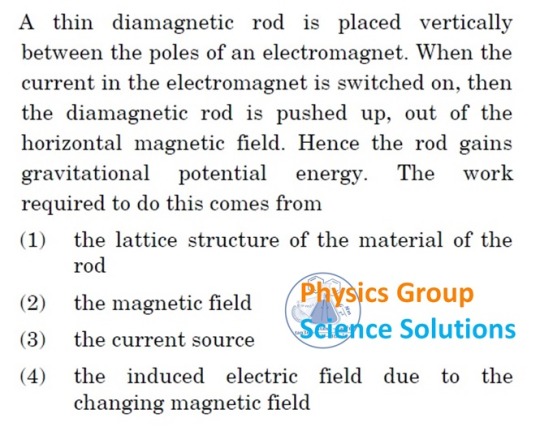
#thin#diamagnetic#electromagnet#potential#energy#magentic#field#material#lattice#current#physics#solutions
3 notes
·
View notes
Text
Sustainable Recycling of Rare-Earth Elements from NdFeB Magnet Swarf
Sustainable Recycling of Rare-Earth Elements from NdFeB Magnet Swarf: Techno-Economic and Environmental Perspectives Rare-earth elements (REEs) are increasingly susceptible to supply risks due to their limited geographical availability and growing demand in clean energy applications such as neodymium-iron-boron (NdFeB) magnets used in electric vehicles and wind turbines. When NdFeB magnets are…

View On WordPress
#diamagnetic#diamagnetic materials#environmentally friendly magnet#ferromagnetic#ferromagnetic materials#hunting magnets#magnet applications#magnet attracts#Magnet Maker#Magnet Swarf#Magnetic alloy#magnetic attraction#magnetic attractive force#magnetic effects#magnetic field#magnetic fields#magnetic force#magnetic material#Magnetic Metals#magnetic objects#magnetic properties#magnetic structures#Magnetism#magnetization#Nd-based magnets#NdFeB magnets#Neodymium iron boron#Neodymium magnets#Non-Magnetic Metals#paramagnetic materials
2 notes
·
View notes
Text

TSRNOSS. Page 156.
#melting point#cadmium#mercury#zinc#boiling point#hydration shell#area#crystal lattice energy#zinc salts#soaps#zinc palmitate#mercury compounds#diamagnetism#magnesium#enzymes#alkaline phosphatase#zinc deficiency#superoxide dismutase#notebooks#manuscripts#diaries
3 notes
·
View notes
Text
anyone wanna take the ACS gen chem exam for me on tuesday
#i don’t think it’ll actually be that bad it’s just that there r a couple topics that i did NOT pay attention to in class#orbitals. paramagnetic/diamagnetic. electronic structures. redox and precipitation rxns
0 notes
Text
Even more materials science updates:
First (not materials science), i've been far too quiet about the genocide in Gaza. Not that my platform is very big at all or that my shouting with the crowd will make a big difference, but for all that is still human about me, i can't say nothing about the atrocities happening right now. I recommend that anyone who reads this also reads about the genocide presently occurring. I am far from the best source, but i can recommend Al-Jazeera as one of the best official news sources for the goings on in Gaza. There are also countless Gaza residents who are posting their own experiences and lives on practically any social media site if you want a first-hand account of the genocide.
Second (materials science), the 2 weeks or whatever since i last posted, i've done a lot of research with solid-state synthesis and it is working so well. I've achieved so much better results (the particles are so much more diamagnetic that they can be moved around or thrown around through a much thicker plastic sheet (the added thickness helps extra to prove that the effect isn't just from the warping and flexing of the very weak plastic lids i was using to test the material before) and are strongly enough repelled from a magnet that i have a hard time putting them directly on it). The synthesis is far easier as well as i just have to mix all the chemicals in to a bottle 1/3 full with saturated sodium bicarbonate solution, then leave it to sit for like a day, filter off all the sodium rich water, rinse it with water a few more times, then cook it real hot. Just about every run i've done so far has demonstrated far better results than the last which has really lifted up my spirits. The magnesium has helped a lot. Using majority calcium (5Ca, 1Mg), shows improved results over just Ca, using majority magnesium (5Mg, 1Ca), shows even better results, but unfortunately using all magnesium isn't noticeably better than majority magnesium. I tried doping it with a tiny bit of chromium (yay for stealing 5 grains of potassium chromium sulphate from lab) which appeared to help somewhat, then i tried doping with a tiny bit of boric acid which appeared to help even more which was interesting. Unfortunately, due to work and being very sick for the last week, i have only gotten 1-2 trials done with each new formulation and most certainly am not making the batches consistently. I've noticed that some runs dehydrate and turn from blue to dark brown much faster than others, though it's not exactly clear why. It may be due to the calcination process seeing as batches with higher calcium tend to turn far slower and never have i seen it turn more than just a slightly less bright shade of green (calcium carbonate has the highest calcination temperature of anything else in the mix so it would make sense to me). In some of the runs, i terminated the heating process early simply due to time constraints, something i regret doing. The best batches also tend to be the ones that were the darkest, so i have no doubt that the simple act of heating it more/less dramatically changes the results. Given the fact that every single sample i've made with the solid-state/precipitate synthesis has shown far greater stability (i've yet to notice even the slightest decrease in strength from the first batch, made around 2 weeks ago), i may just try heating the lighter samples again to see if it improves their qualities. All in all, i've been very excited to see how this turned out. Given all that we've learned, i'm fairly surprised it worked at all in the liquid stage and i'm betting that the only reason it did was because of some oxygen displacing some of the chlorine, making it (in some tiny amount), into the oxides. I can further say that the material shows no magnetic properties before being heated which as far as i'm concerned is very strong evidence that the material needs the oxides in order to work (or at the very least, carbonates and hydroxides don't let it do whatever the fuck lets it be so diamagnetic). Some runs have been conducted without washing the precipitate first (usually unintentionally), and while they usually do work somewhat, the results are (far) less spectacular, so inclusion of a large quantity of sodium appears to interfere with its working.
Also, i got 500 grams of copper sulphate pentahydrate. That's 2 moles of soluble copper for less than the price of 100 grams of copper chloride (only like 0.75 moles soluble copper). Not that the only consideration is the copper, the sulphate may be significant in that it may react with calcium or otherwise mess with the reactions, but based on some water test strips a friend gave me, it appears most of the sulphate does get taken up by the sodium and does not react with the calcium (fortunately the calcium gets taken up by the carbonate faster, at least while the bicarbonate is in much higher concentrations than the sulphate). Now, it's still unknown how the copper sulphate will react, i still have some of the copper chloride solution and i intend to fully use it up before i switch due to having a shortage of containers to store the dissolved copper.
#materials science#potential rt superconductor#calcium aluminium copper oxide#nice compound#very diamagnetic#it's damn cool#i honestly have no clue how much the professors want me to show about it before they offer lab space#after a productive meeting i know that 6 profs have the money and lab space to help me out#but it's such a struggle to convince them of anything#idk#much hard#anyway#goodnight
0 notes
Text

my blaze and silver designs :]
some design notes under the cut!
ive always hc that silver came from a nuclear winter, and had adapted to it. he’s taller than other hedgehogs, so he has less surface area per volume!! as per berggman’s rule, this helps him retain more heat. he also has smaller ears than the other hedgehogs, and siamese point markings on his colder areas. Really all just to retain warmth. i also put a + and a - next to his shoes, because i always imagined his telekinesis was more magnetism. hes named after a metal sooo… and specifically one that is diamagnetic, meaning it actually REJECTS magnetism, and I thought that was fitting seeing he throws shit around a lot.
as for blaze: i was very inspired by her indian-asian influences. I also thought it was really interesting she wore shalwar in her concept art! I gave her a crescent shaped bindi—worn for religious and spiritual reasons and stands for wisdom and tranquility—and kept her mantle mostly the same, though i played with giving her Áo dài. I also gave her siamese/color point markings because they’re cute + i thought since color point markings only appear on the cooler spots on cats bodies because of a heat sensitive enzyme, and I thought it made sense for a heat sensitive marking being on a flame wielding cat like whatttt. also i gave her false eyes on her ears like a tiger.
129 notes
·
View notes
Text
In honor to the eighth episode, let's have an overview of all things Magneto could do if the writers allowed him to
First of, Electric fields and magnetic fields are both manifestations of the electromagnetic field, different sides of the same coin. Electromagnetism acts over all existent materials in different forms. Here are three of them:
Ferromagnetism
Paramagnetism
Diamagnetism
Ferromagnetism is the basic and most know form of magnetism, affecting materials like iron, cobalt and adamantium. It doesn't affect materials like lead, so Magneto shouldn't be allowed to stop bullets
However, he should be allowed to stop the planet's rotation, affecting Earth's nickel magnetized iron core, making the whole planet his hostage.
Paramagnetism refers to materials whose magnetism disappears once the magnetic field is removed while ferromagnetism refers to materials that can retain their magnetic properties when the magnetic field is removed. Both are attracted towards magnetic field.
Y'know what material is paramagnetic? Carbon. Won't even say what this would entail.
On the opposite side, diamagnetism involves an extremely weak force of repelling. All materials are diamagnetic to an extent, but the interesting thing is that water is diamagnetic
So if we consider that Magneto's powers are limitless, he should be able to suspend his enemies not by the iron on their blood (iron in the blood isn't in its ferromagnetic form), but by the water. He could be able part the ocean by only a mere wish. He would have the Force
If he can generate magnetic fields, he can generate electricity. Yes, he would be able to create enough lightning it would scare Thor. But this also means that, by emitting electricity at the right frequency, Magneto would be able to produce ultraviolet, infrared, and by forcing a nuclear reaction through parting atoms, produce up all kinds of radiation including microwave rays
#erik lensherr#magneto#x men#xmen 97#x men 97#physics#please correct me if i'm wrong#me!xmen#i did try to make it sound simple#the universe is permeated in eletromagnetism
119 notes
·
View notes
Text
Chemistry video recs, part 2
[p1]
Note: some of these are "pure" chemistry, some may be strongly related to other fields. As promised, I make fairly liberal choices on the intersection of sciences and they aren't always objective, but the videos are always chemistry-related. Enjoy!
Under 15 minutes
Growing Flowers from Transition Metal Liquid
Molten Lithium Hydride is almost the Most Powerful Reducing Agent
Making Color-Shifting Rare Earth Salts
Understanding Crystallography - Part 1: From Proteins to Crystals
Cleaning old sodium metal
Paramagnetism and Diamagnetism
Space Galaxy in the Chemistry lab. Titanium tetraiodide.
Spin in Quantum Mechanics: What Is It and Why Are Electrons Spin 1/2? Physics Basics
SOLVING the SCHRODINGER EQUATION | Quantum Physics by Parth G
All about White Phosphorus
Making Acid Rain (INDOORS) - Periodic Table of Videos
Seleninyl chloride. Best solvent for selenium and other non-metals!
Recreating the chemical traffic light reaction
Over 15 minutes
Making Cat Attractant (Nepetalactone)
Inside a Nuclear Reactor
Making ferrofluid from scratch
What causes the Pauli Exclusion Principle?
The microwave plasma mystery
Literally the whole playlist of All Chemical Elements in Order
Recreating the Briggs-Rauscher oscillating reaction
Extracting the citric acid from lemons
Complete History of the Avogadro Number
#finally gathered enough videos for another post :)#op#mine#studyblr#chemblr#stemblr#chemistry#sciblr
32 notes
·
View notes
Text

#ion#magnetism#diamagnetic#paramagnetic#molecular orbital theory#chemical bonding#chemistry#solutions
1 note
·
View note
Text
Magnetic Domains: Understanding the Foundation of Magnetism
Magnetic Domains: Understanding the Foundation of Magnetism Magnetic domains are the foundation of magnetism. In this post we’ll dive into the world of magnetic domains, and explore how they form, behave and the processes that determine their impact on magnetic materials. Understanding these will give you a deeper appreciation of how magnetism works in everyday applications. What are Magnetic…
#Antiferromagnetism#Cause of Magnetism#diamagnetic#diamagnetic materials#Electromagnetism#environmentally friendly magnet#ferromagnetic#ferromagnetic materials#hunting magnets#magnet attracts#Magnet Maker#Magnetic alloy#magnetic attraction#magnetic attractive force#magnetic domain#magnetic domains#magnetic effects#magnetic field#magnetic fields#magnetic force#magnetic material#Magnetic Metals#magnetic objects#magnetic properties#magnetic structures#Magnetisation of Magnetism#Magnetism#magnetization#Nd-based magnets#Neodymium magnets
1 note
·
View note
Text
FINALS
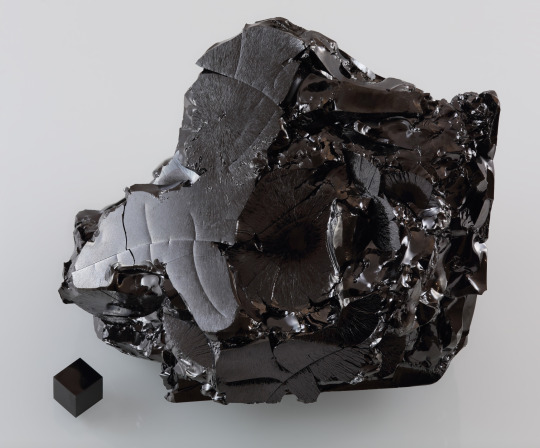
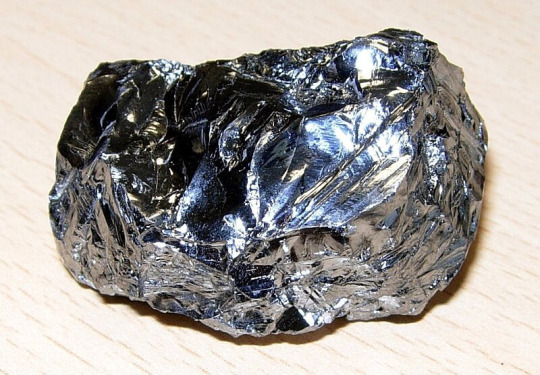
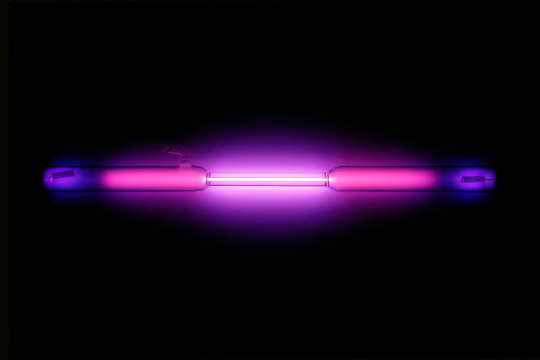







CARBON:
Forms the basis of all life
What diamonds, coal, and pencil lead are made of
Used to make graphene, one of the strongest materials (one atom of thickness is 200x stronger than steel)
SILICON:
Not to be confused with Silicone
Could potentially be used to make life instead of carbon
Used in a lot of electronics, hence the name of silicon valley
ARGON:
Has a distinctive purple glow
used in neon signs
often mistaken as a pirate's favorite element
POTASSIUM:
Found in high quantity in bananas
burning it produces a light purple or red flame
the first metal to be discovered by electrolysis
STRONTIUM:
Used in cancer treatment
Used in toothpaste
The most accurate atomic clock (to one second in the 200 million years) uses strontium atoms
FLOURINE:
the most receptive and most electronegative of all the chemical elements
oxygen, helium, neon, and argon are the only elements fluorine can't react with
the only element that can react with noble gases, specifically xenon, krypton, and radon
BISMUTH:
the most diamagnetic metal (meaning it gets repelled by magnets instead of attracted)
Known for its unique shape and colorful style
PROMETHIUM:
the last lanthanoid to be discovered
PLUTONIUM:
Named after the dwarf planet Pluto
Was once thought to have been discovered by Enrico Fermi along with element 93, but he was actually mistaken. He named it Hesperium.
An unnaturally poor conductor of electricity
Used to make atomic bombs, even more powerful than uranium
Known by some as the "forbidden gummy"
COBALT:
Turns a vibrant blue when heated to extreme temperatures
Named after kobolds, who are "mythical, death-dealing goblins" (not the lizard kobold)
One of only three elements that are ferromagnetic at room temperature
#element#periodic table#periodic table of elements#poll#polls#tournament#elements#carbon#silicon#argon#potassium#strontium#flourine#bismuth#promethium#plutonium#cobalt
164 notes
·
View notes
Text

The Science Research Diaries of S. Sunkavally. Page 165.
#theoretical science#osteoporosis#leaf#petiole#chemical reaction rate#stirring#breeze#gastropods#speciation#hydration number#sodium ion#potassium ion#sodium iodide#potassium iodide#solubility#sodium sulphate#peroxides#diamagnetism#superoxide anion#acidity#manuscript#notebooks#diaries
0 notes
Text
The natural laws of life
What goes up must fall
Matter can not be destroyed
And my attraction to you
You pull me in without even trying
Trapping me in your electromagnetic field
There's no hope for my escape
We're broken magnets, you and I
You are diamagnetic
And I am repulsive
You can't help but run
And I can't stop myself from chasing
Broken magnets
Just a pair of broken magnets
#poetry#mental health#romance#unrequited love#heartbreak#poems on tumblr#depressing shit#jessiespoetry#original poem
3 notes
·
View notes
Text
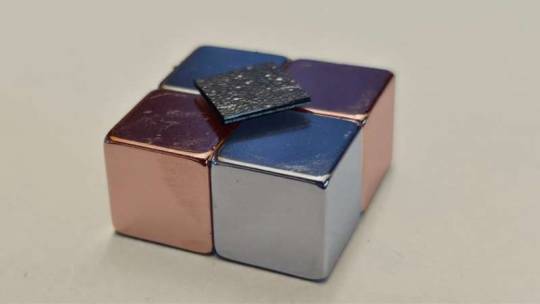
Magnetic levitation: New material offers potential for unlocking gravity-free technology
Researchers at the Quantum Machines Unit at the Okinawa Institute of Science and Technology (OIST) are studying levitating materials—substances that can remain suspended in a stable position without any physical contact or mechanical support. The most common type of levitation occurs through magnetic fields. Objects such as superconductors or diamagnetic materials (materials repelled by a magnetic field) can be made to float above magnets to develop advanced sensors for various scientific and everyday uses. Prof. Jason Twamley, head of the unit, and his team of OIST researchers and international collaborators have designed a floating platform within a vacuum using graphite and magnets. Remarkably, this levitating platform operates without relying on external power sources and can assist in the development of ultra-sensitive sensors for highly precise and efficient measurements. Their results have been published in the journal Applied Physics Letters.
Read more.
14 notes
·
View notes
Text
Seems like LK-99 is diamagnetic, as verified by... as yet unpublished(?) research by a Chinese team who posted a video on Bilibili, and a random guy with a "private workshop" who posted a video on twitter. The Chinese team say they could only test diamagnetism as they didn't produce flakes large enough to test resistance, but they're skeptical that other superconductor properties will replicate. Obvious internet videos without peer review are not a good source but it does give me kind of one tiny sliver of excitement that this might be real.
37 notes
·
View notes
Text
yo physicists - we were just reading about the differences in types of magnetism, and learning there are way more of them than we realised:
Diamagnetism, paramagnetism, and ferromagnetism are the three main types of magnetism seen in materials. Other types include antiferromagnetism, ferrimagnetism, superparamagnetism, and metamagnetism
but what we were trying to find out if you can help here is: is there an equivalent physics term for "is not magnetic at all"? is it just non-magnetic? or is it something-magnetic like the other words, perhaps amagnetic?
edit: it's nonmagnetic, thanks @delgrosso
8 notes
·
View notes